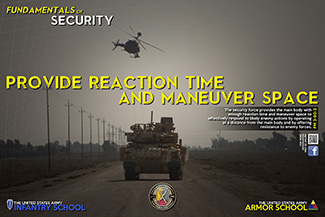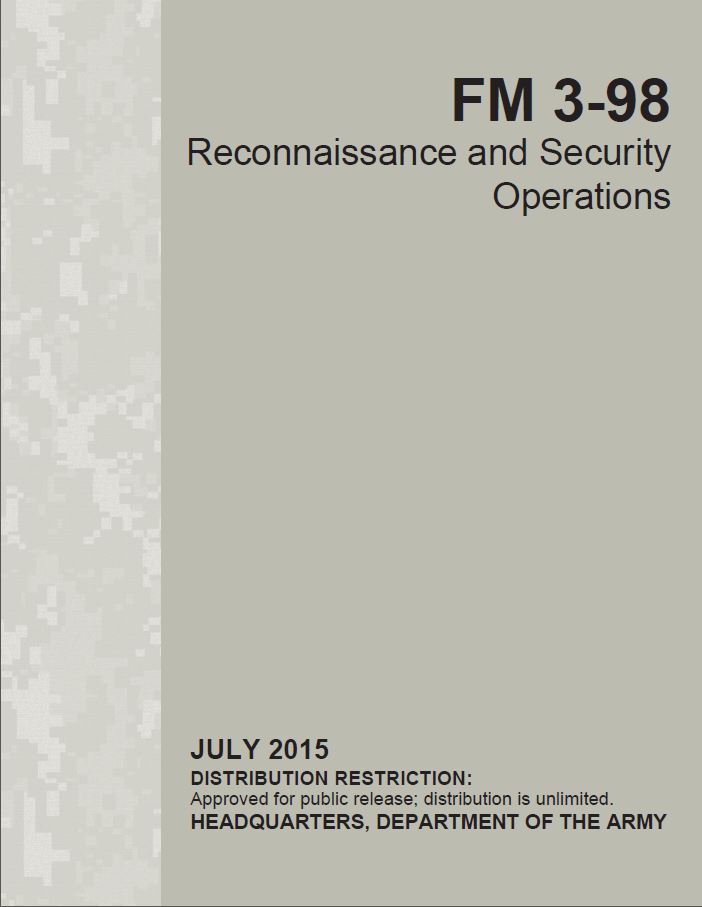PROVIDE REACTION TIME AND MANEUVER SPACE
The security force provides the main body with enough reaction time and maneuver space to effectively respond to likely enemy actions by operating at a distance from the main body and by offering resistance to enemy forces. The commander determines the amount of time and space required to effectively respond from information provided by the intelligence preparation of the battlefield (IPB) process and the main body commander's guidance regarding time the main body requires to react to enemy courses of action (COA) based on the mission variables of METT-TC. The security force that operates farthest from the main body and offers more resistance provides more time and space to the main body. It attempts to hinder the enemy's advance by acting within its capabilities and mission constraints.
Confederate Cavalry at Chancellorsville
Era: American Civil War
After its defeat at Fredericksburg the Union Army of the Potomac received a new commander in January 1863. Major General Joseph Hooker reorganized the army, raised its morale, and centralized control over his intelligence gathering agencies. He planned a spring campaign intended to place his army between the Confederate Army of Northern Virginia commanded by General Robert E. Lee and the Confederate capital in Richmond, Virginia. To achieve this objective, Hooker had to get his army across the Rappahannock River unmolested. Therefore, he employed a combination of distracting cavalry raids and the movement of multiple columns by his larger army to confuse the Confederates as to Union intent and objective. While Lee struggled to cope with multiple threats, Hooker hoped to exploit the confusion and secure a battlefield victory.
On 29 April 1863, the bulk of Hooker’s army crossed the Rappahannock River and advanced to Chancellorsville. This move offered an opportunity to outflank Lee, whose army remained several miles to the east near Fredericksburg, facing another Union force. If Lee’s Army of Northern Virginia remained in place, Hooker’s army could strike it from behind.
Unfortunately, Lee’s cavalry commander, General J.E.B. Stuart, had employed cavalry screens and patrols to watch for Union flanking movements. Stuart’s cavalry patrols evaded their Union counterparts and soon began to observe and monitor the movement of Hooker’s army. The steady stream of information they provided alerted Lee to the threat. Despite being outnumbered, he split his army. Leaving a smaller force at Fredericksburg to create the impression that the Confederate army remained there, Lee led the rest of his army toward Chancellorsville to make a surprise attack upon Hooker. He benefited from the accurate information of Union positions obtained by the Confederate cavalry. Moreover, he could risk splitting his army in the face of a superior force partly because he knew where Hooker’s main effort lay. The troops under Hooker’s direct command became Lee’s objective.
The resulting two day battle became Lee’s greatest victory and the Union Army, despite its numerical advantage, was routed. The unceasing efforts of Stuart’s cavalry played a central role first in alerting Lee to a flanking danger and then by enabling Lee to maneuver his army where it could strike.
Fundamentals of Security
- Ensure Continuous Reconnaissance
- Even though the Confederate Army was still encamped at Fredericksburg and preparing for the campaign season, Stuart’s cavalry remained vigilant through screen and patrolling actions to prevent the Army of Northern Virginia from being surprised.
- Provide early and accurate warning
- Stuart’s cavalry gave Lee an early warning of the Federal flanking maneuver and allowed him to react quickly. The steady stream of reports provided Lee an accurate picture of Hooker’s disposition and intent, which shaped the Confederate battle plan.
- Provide reaction time and maneuver space
- Stuart’s ability to keep Lee constantly updated gave the army commander the time and space he needed to develop and implement a response to the Union threat, resulting in the splitting of the Confederate army and the march to Chancellorsville.
- Orient on the force or facility to be secured
- Stuart’s cavalry operated between Hooker’s army and Lee’s main body, continuously updating the latter on enemy activities.
- Maintain enemy contact
- Once Stuart’s scouts began to observe Union troop movements, they monitored and reported the enemy actions. By maintaining contact through observation, they provided the timely and accurate information Lee needed to maneuver his army and avoid the threat of being outflanked.
Source: Woodhead, Henry (ed.), Echoes of Glory: The Illustrated Atlas of the Civil War (New York City, New York: Time-Life Books, 1998), pp. 98-109.


